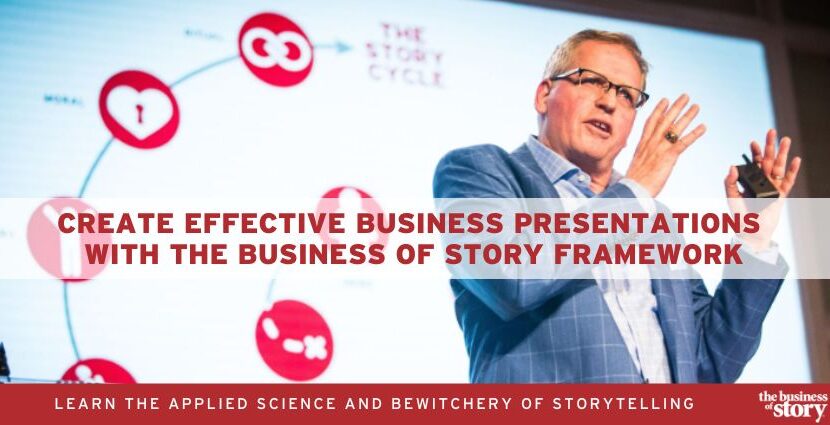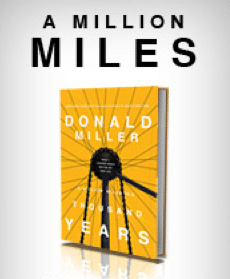You Have One Job With Your Sales & Marketing Presentations: Move Your Audience to Action Quickly
My storytelling career really began in 2006 when I studied the craft in earnest.
I was inspired by Joseph Campbell’s Hero’s Journey and translated it to business with my 10-step Story Cycle System.
The ten steps include
- Backstory: Define your #1 position in the marketplace.
- Hero: Describe your #1 target audience.
- Stakes: Identify what your prospect emotionally wishes to gain and what are they physically willing to invest in to fulfill their wish.
- Disruption: Reveal what has changed in your customer’s world that nudges them to buy your product or service.
- Antagonists: Embrace the obstacles and gaps that you will help your audience overcome.
- Mentor: Demonstrate how you and your offering are uniquely equipped to help your prospect get what they wish for and want.
- Journey: Illustrate what the road to success with you looks like.
- Victory: Celebrate the small victories along the way to demonstrate to your customer that they’re living the right story.
- Moral: Connect your shared beliefs and values through the promises you keep in the stories you tell.
- Ritual: Develop repeat business and powerful word-of-mouth marketing from customers who are now sharing your story with their world.
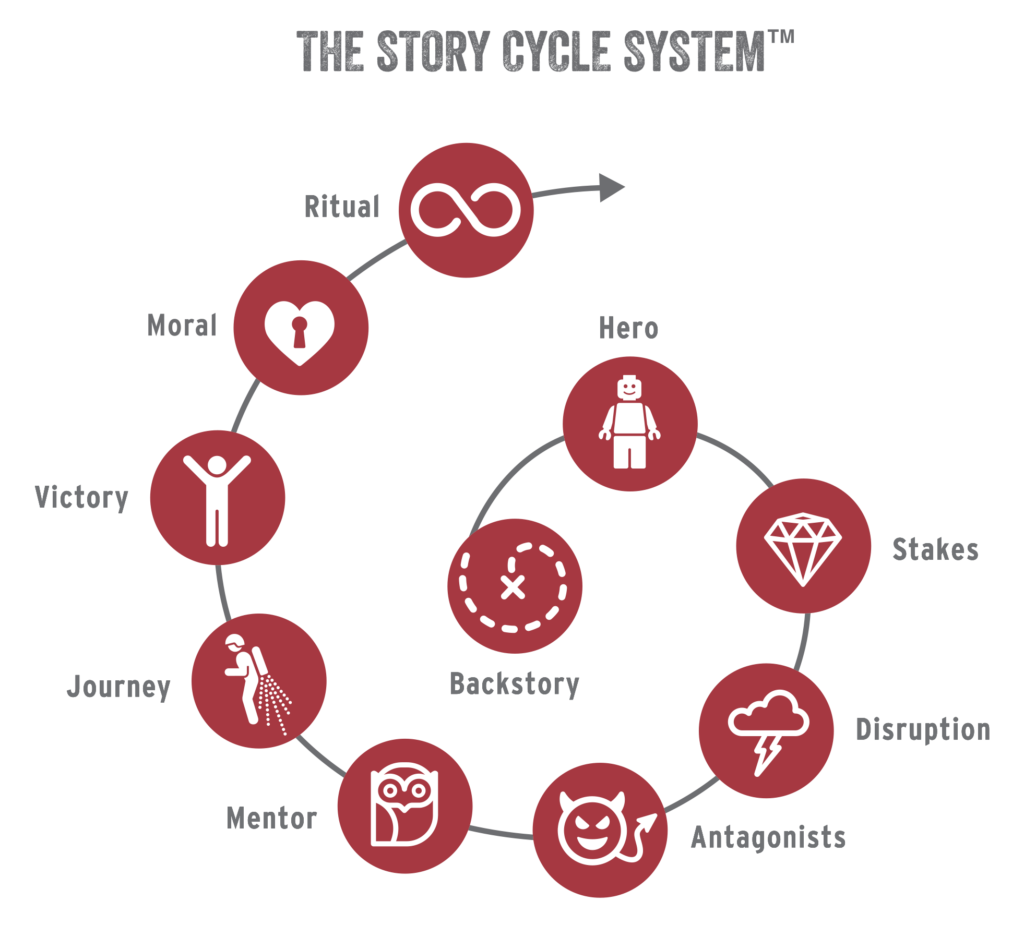
The Spiral Narrative Structure Capture in the Story Cycle System™ to Increase Customer Engagement With Every Revolution
We’ve used the Story Cycle System™ to grow brands by as much as 600 percent.
We’ve used it to create increase engagement by 10x+ for long-form communications like videos, blogs, articles and white papers.
And we’ve shown people how to use the Story Cycle System to create presentations that transform audiences resulting in real ROI.
You can learn how to apply the Story Cycle System in your life by listening to episode #350, How to Craft Your Brand Story Strategy With the Story Cycles System™.
I take you on an abridge 15-minute overview of the Story Cycle and then dive into a 45-minute coaching session complete with exercises you can use every step of the way.
But, the 10-step process can get complicated.
Plus, you may be like lots of people who simply don’t care about the theory of the Story Cycle System. You just want to make it work fast in your communications.
So I developed this one-page Business of Story Presentation Worksheet that you can use to develop your long-form content and presentations and benefit from the Story Cycle structure without having to know the theory.
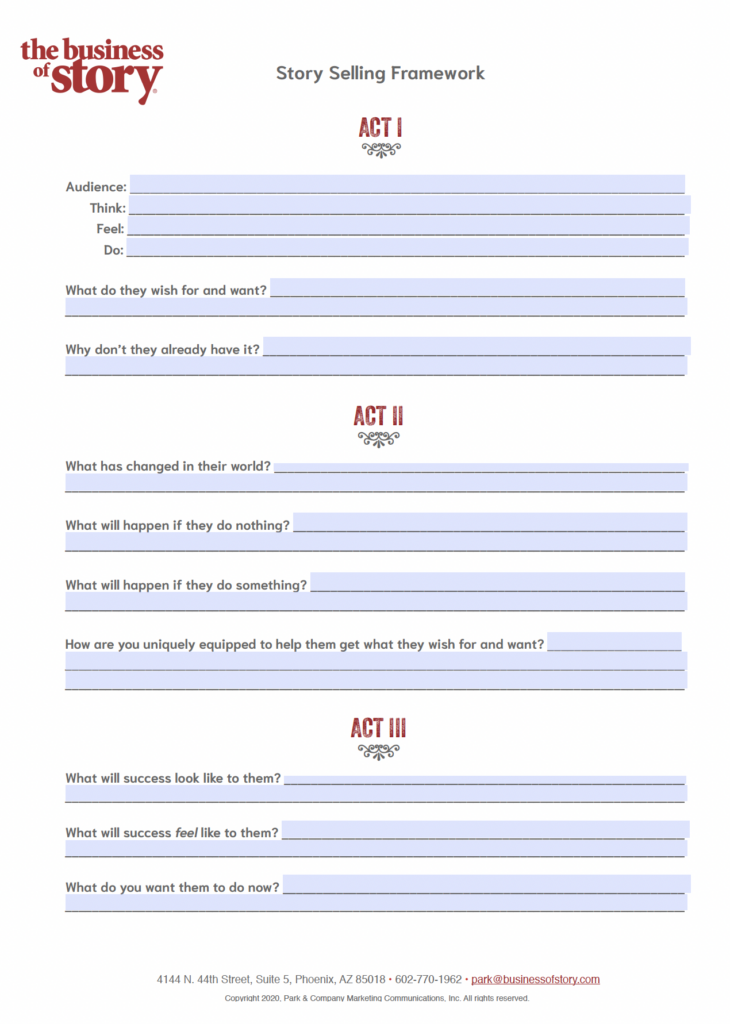
The best way to demonstrate it to you is to show you how I used it to develop my TEDxGilbert Talk. It was a smashing hit and I’ve been using and teaching this process ever since.
In my recent episode of the Business of Story podcast, which, by the way, Feedspot.com named the #1 Business Storytelling Podcast for 2023 (that’s now two years in a row), I walk you through questions to ask yourself about your audience when developing your presentation.
And then I’m going to show it to you in action from my TEDx Talk.
Have a piece of paper and pen handy, or download the Business of Story Presentation Worksheet, so you can write these questions down and then apply them to your content creation.
For a little context, I gave my TEDxTalk in Gilbert, Arizona on March 24, 2018. The theme of the event was Identity: Who we are and where we’re going.
We were asked to speak to an audience of young professionals about the impact social media is having on how they see themselves, the pitfalls and the opportunities for growth.
After working through my Story Cycle System strategy doc., I arrived at the title for my presentation of: Start Looking for Your Scenes and Your Story Will Find You.
I arrived at this concept by first considering the most important aspect of the presentation: My audience and what’s in it for them. So ask yourself, who is your audience and what do you want them to think, feel and do at the conclusion of your presentation?
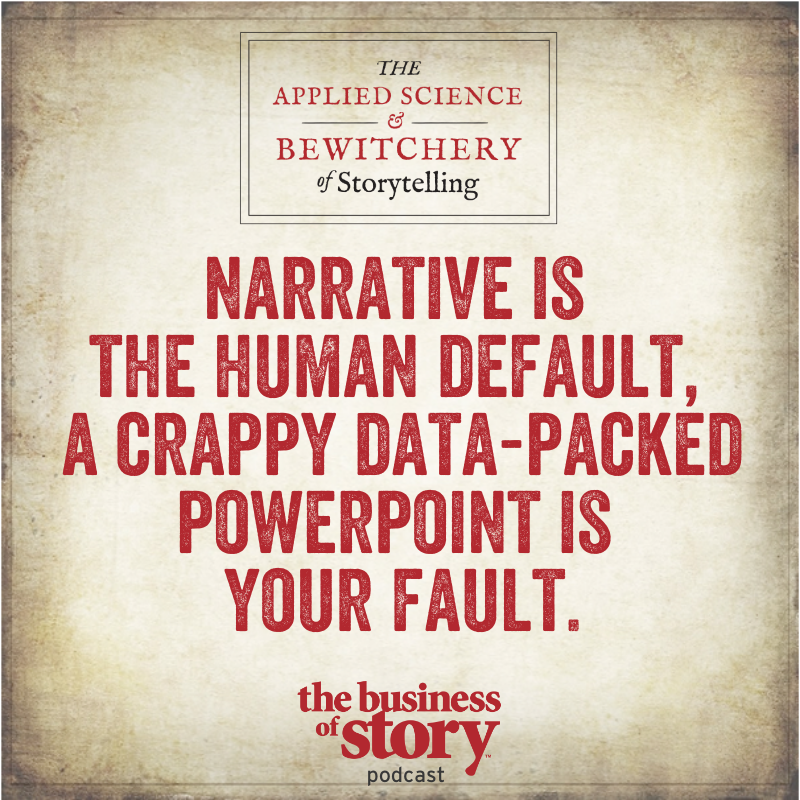
You can think of this presentation structure in three acts: Set-up, Problem, and Resolution.
ACT I
Audience: Twenty-something young professionals who want to find significance by telling their story but they don’t know how.
- Think: At the end of my TEDx Talk, I wanted them to think, “Hey, I have an important story to tell and now I know how to do it. It doesn’t have to be some epic adventure, I just need to capture and share the moments that have shaped who I am today.”
- Feel: I wanted them to feel excited about telling their story and have mustered the courage to do so by understanding how to find those moments or scenes that inform who they are today.
- Do: I wanted them to immediately apply what they learned from my talk and as you’ll hear, I give them three proven steps forward to find success in the storytelling quickly.
What do they wish for and want?
My audience wished to be heard and appreciated in the world and they wanted a proven way to tell their stories to fulfill that wish. Think of the wish as being psychological and the want to be the physical thing they’ll invest in to, again, fulfill their wish. Aren’t we all really in the wish-granting business?
Why don’t they already have it?
What are the obstacles and antagonists standing in their way from fulfilling their wish? In this case, my audience had a storytelling gap. They didn’t know how important moments are in storytelling, how to unearth these moments from their own life, and how to share these moments in the form of short stories so that people better understand who they are, what they believe and value, and why?
ACT II
What has changed in their world?
The main theme of TEDxGilbert was the intrusion of social media in our lives and how it’s difficult to tell fact from fiction both online and by extension, what is happening with our own stories. The question I posed was how can you tell your authentic story in a world of fabricated tales and sensationalized storytelling?
What will happen if they do nothing?
If my audience did nothing, they would remain stuck in this FOMO world of being jealous about other people’s supposed stories and never having the courage to share their own authentic story.
What will happen if they do something?
If they follow my advice and are guided by the proven storytelling frameworks, then they will achieve a whole new level of significance by being recognized for who they are, what they stand for, and how they can contribute to the betterment of life for those they serve.
How are you uniquely equipped to help them get what they wish for and want?
I am uniquely equipped to help them get what they want because I share with them what I’ve learned in 35+ years of branding and marketing experience and the three narrative frameworks that share internationally as I consult, teach, coach and speak helping leaders excel through the stories they tell.
ACT III
What will success look like to them?
First success will come internally in the form of having pride in their story and appreciating the moments that have shaped who they are today. Externally, in the sharing of their moments, they will make deeper connections with the people they interact with in person and they will increase their social engagement online as followers will embrace their true stories.
What will success feel like to them?
As I mentioned at the top, they will feel excited about sharing their stories because now they know how. They will be inspired to do so because they no longer have the fear of sharing their story. They have the courage because they can use the frameworks and experience how they work.
What do you want them to do now?
My call to action is actually the three things I want them to do that night when they return home. This way they will become a part of my story and invested in theirs.
Let’s recap the steps:
- Who, specifically, is your audience and what do you want them to think, feel and do when you are finished with your presentation?
- What do they emotionally wish for and what physically will they buy in order to fulfill their wish? Again, this wish for and want is all in relation to your offering.
- Why don’t they already have what they wish for and want? What’s standing in their way that you can help them overcome?
- What has changed in their world to make what they wish for all the more urgent and what makes them want your offering because your are the most timely and relevant solution to their problem.
- What will happen if they do nothing and what will happen if they do something? Are your playing to their negativity bias or leveraging their optimism? Maybe both.
- Finally, you get to talk about you. How are you uniquely equipped to help them get what they wish for and want?
- What will success look like? Paint that pitcture for them. What will success feel like, get them emotionally attached to your offering. And what do you want them to do next, what is your explicit call to action.
Here is my TEDx Talk, Start Looking for Your Scenes and Your Story Will Find You.
In this post, What My TEDx Talk Taught me About Storytelling, I outline the 10 steps of the Story Cycle System in the script I used for my presentation.
Story on!

